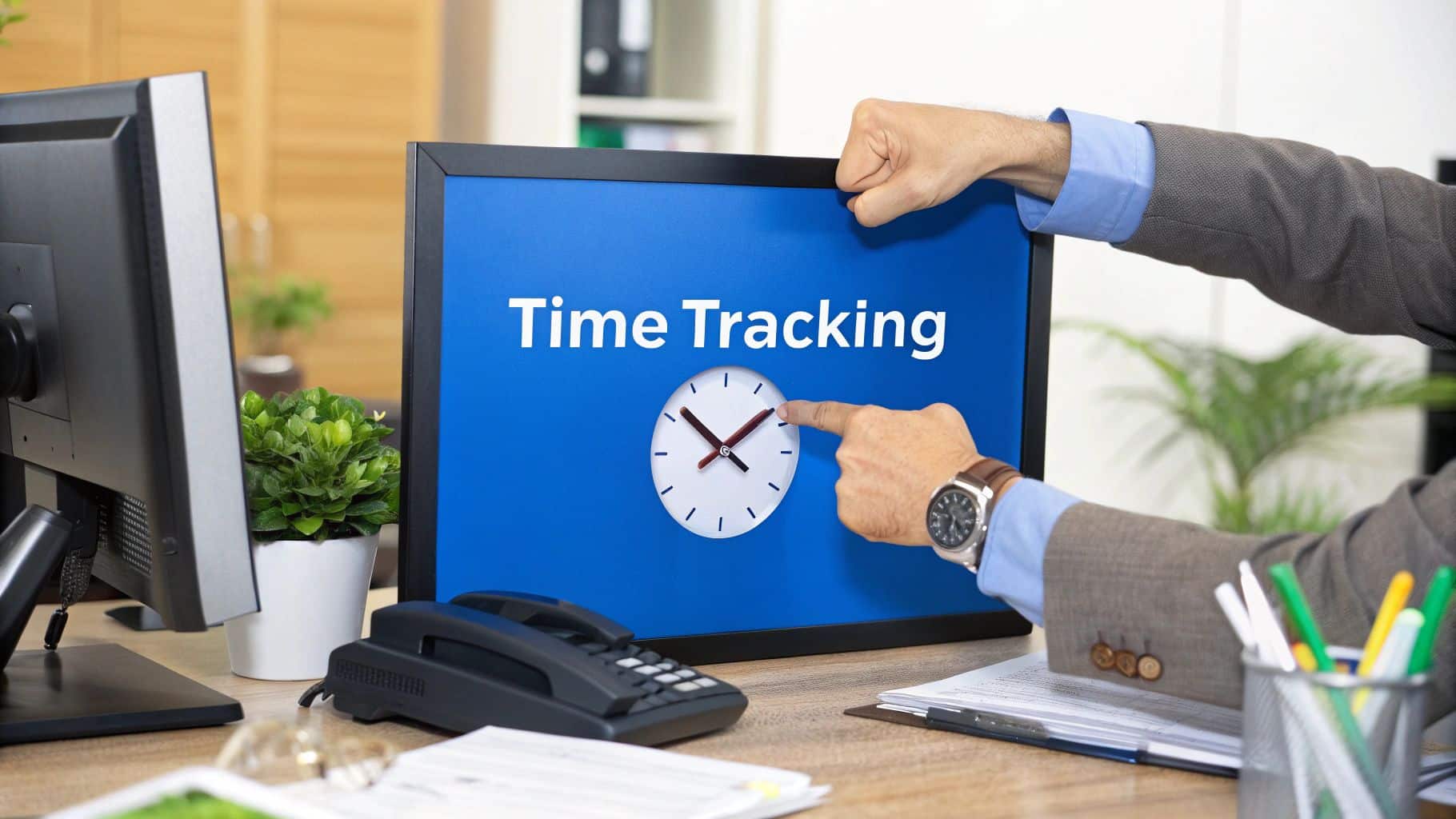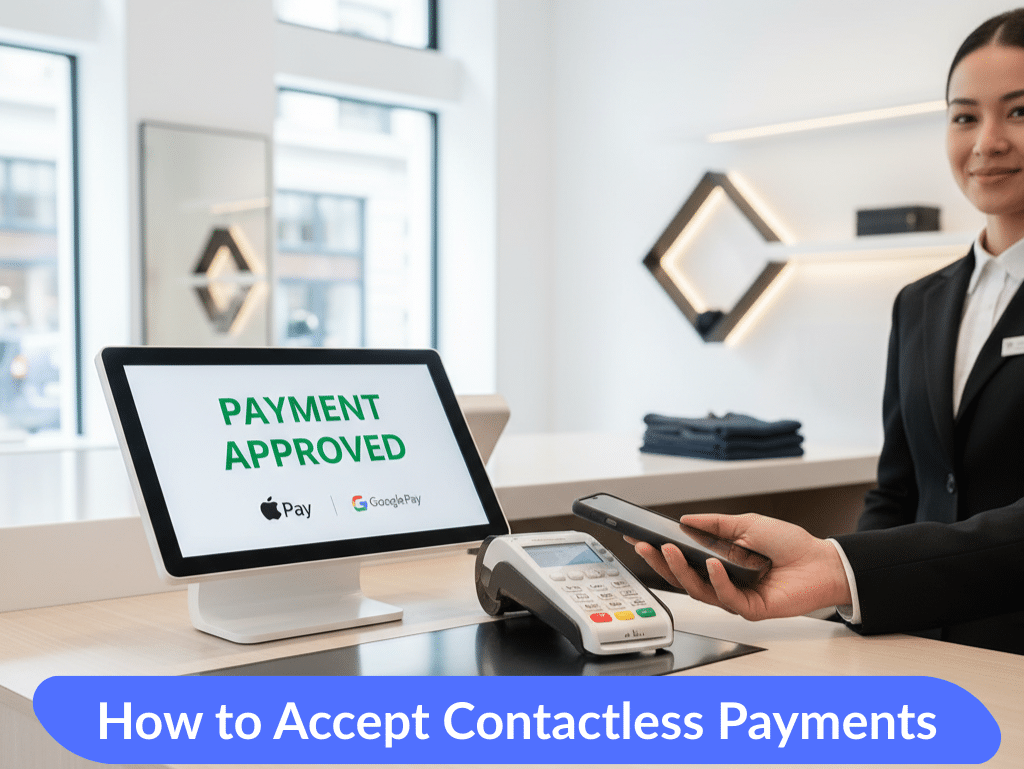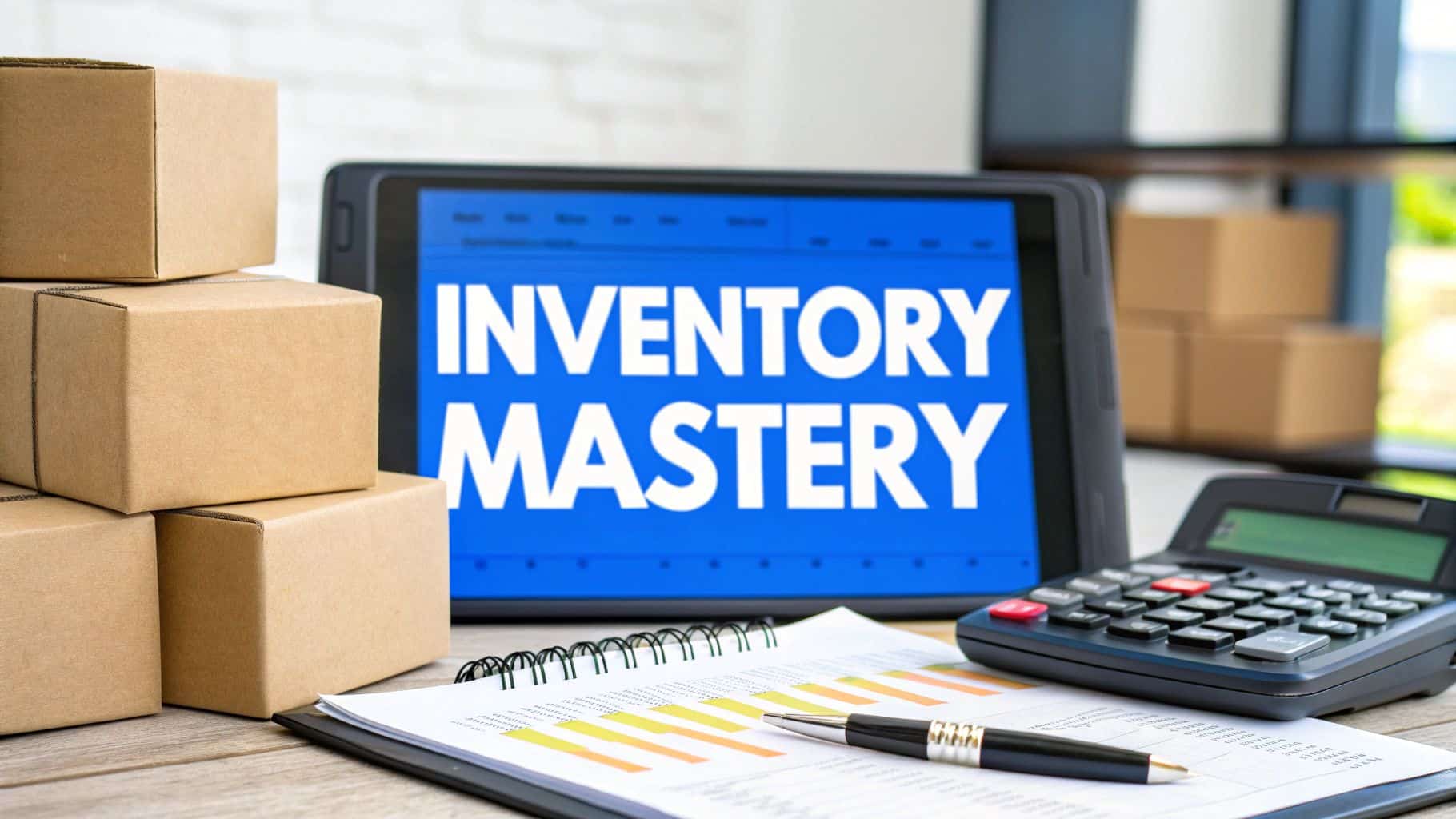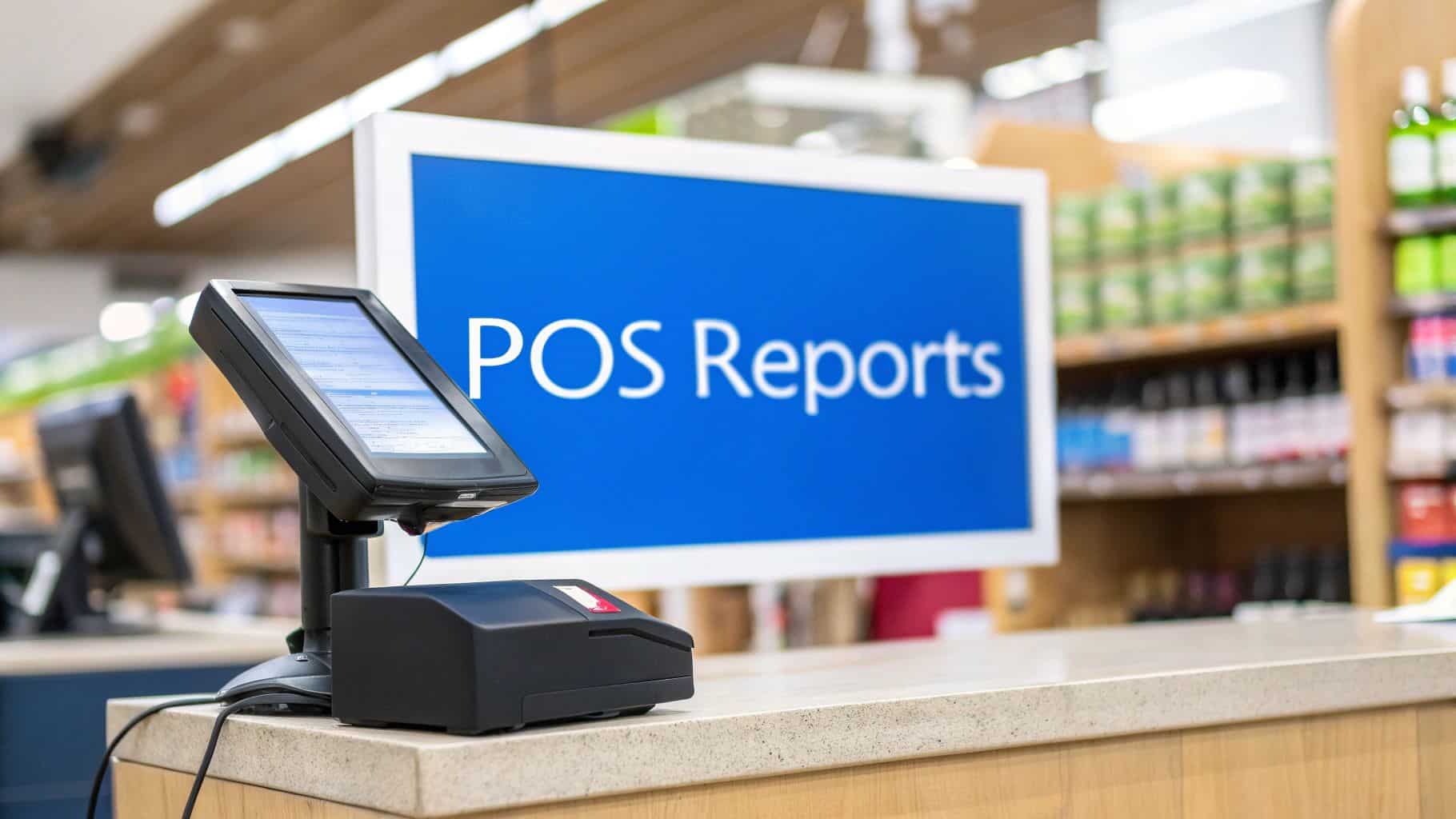Choosing the right point of sale system can significantly impact the efficiency and profitability of your business. Whether you own a restaurant, retail store, or a growing small business, the POS system you select affects daily operations such as payment processing, inventory management, and customer experience. In this comprehensive POS system comparison, we will delve deeply into top contenders like Clover POS, Square POS, Toast POS, and others, examining their features, pricing, and industry fit. This detailed guide will equip you to make a confident choice tailored to your business’s specific needs.
Table of Contents
- Overview of Popular POS Systems
- Key Features to Consider in a POS System
- Pricing Comparison of Top POS Platforms
- Industry-Specific POS Solutions
- Cloud vs On-Premise POS Systems
- Biyo POS: A Modern POS for Small Businesses
- FAQ
Overview of Popular POS Systems
Before comparing details like pricing and features, it’s important to understand what the market leaders offer. The POS system landscape is vast, with each provider focusing on different niches and business sizes. This section explores some of the most popular platforms to give you a solid foundation for the detailed comparisons ahead.
Clover POS
Clover POS is a flexible and scalable system, designed to accommodate a wide range of business types, including restaurants, retail stores, and service providers. It offers a variety of hardware options such as countertop terminals, mobile card readers, and full kiosks, allowing businesses to pick devices that best fit their workflows. For example, a cafe might use Clover’s portable card readers for tableside payments, while a retail store may prefer a full touchscreen register.
One of Clover’s standout strengths is its extensive app marketplace. This ecosystem allows businesses to add functionalities like loyalty programs, employee scheduling, and advanced reporting tailored to their specific needs. For instance, a boutique retailer can integrate inventory tracking apps to automate stock management, reducing human error and time spent on manual counts. The flexibility in app integration makes Clover highly customizable, ideal for businesses expecting to grow or adapt over time.
Security and compliance are key considerations, and Clover excels here by offering PCI-compliant payment processing with encrypted transactions. This protects sensitive customer data and builds trust. Additionally, Clover provides real-time sales reporting and dashboards accessible from mobile devices, enabling business owners to monitor their operations remotely. Transparency in pricing, combining hardware purchase with a flat transaction fee, helps businesses avoid surprise charges, which is especially valuable for startups managing tight budgets.
Square POS
Square POS revolutionized the industry by offering a free, easy-to-use app paired with affordable hardware, targeting small and mobile businesses. Its simplicity and accessibility have made it a favorite for food trucks, market stalls, and freelancers. Square supports a variety of payment methods including chip cards, contactless NFC payments, and mobile wallets, making it highly versatile in today’s fast-evolving payment landscape.
Beyond basic payment processing, Square offers an all-in-one business management platform. This includes features such as payroll management, employee time tracking, and email marketing tools. For example, a small cafe can use Square to not only take payments but also schedule shifts for staff and send promotional offers to loyal customers, all within the same system. This integration reduces the need for multiple software subscriptions, saving time and money.
Despite the free app offering, Square generates revenue through transaction fees and premium subscription plans that unlock advanced features. For instance, advanced inventory management or customer relationship management tools require upgrading. This flexible model suits businesses that want to start with minimal investment and scale functionality as they grow, but it is crucial to assess these costs in the long term to avoid surprises.
Toast POS
Toast POS is a specialized platform designed specifically for the restaurant industry. Unlike general POS systems, it includes features tailored to the complex workflows of foodservice operations. These include tableside ordering, kitchen display systems (KDS), and built-in integrations with popular delivery platforms. A busy full-service restaurant benefits greatly from Toast’s ability to manage orders in real-time and coordinate kitchen workflows seamlessly.
Operating on Android-based hardware, Toast POS offers durable, restaurant-grade devices optimized for the high demands of kitchen and floor environments. For example, servers can use handheld devices to take orders directly at the table, which immediately reflect on the kitchen displays, reducing errors and improving service speed. Additionally, Toast’s menu management allows quick updates to pricing or availability, vital for seasonal restaurants or those adjusting to supply chain fluctuations.
Because of its specialized focus, Toast tends to be priced higher than general-purpose POS systems. However, many restaurants find the investment worthwhile due to the operational efficiencies gained. Features such as detailed sales analytics, employee management, and integrated loyalty programs provide additional value, enabling restaurateurs to make data-driven decisions and boost customer retention. For businesses outside foodservice, however, Toast may offer more complexity and cost than necessary.

Key Features to Consider in a POS System
When comparing POS systems, it’s crucial to look beyond brand names and evaluate specific features that will support your unique business processes. The right features can enhance operational efficiency, improve the customer experience, and ultimately increase profitability. This section breaks down essential aspects to consider carefully.
Payment Processing Capabilities
The primary function of any POS system is to process payments smoothly and securely. Today’s customers expect multiple payment options, from traditional credit and debit cards to contactless NFC payments and mobile wallets like Apple Pay or Google Pay. Therefore, a good POS system must support these modern payment methods to cater to diverse customer preferences and speed up transactions.
Payment processing models vary among POS providers. Some, like Square, bundle payment processing into their ecosystem, offering in-house merchant accounts with clear pricing. Others, such as Lightspeed POS, allow businesses to connect third-party processors, providing flexibility but also requiring more setup effort. This choice impacts fees, transaction times, and potentially security.
Understanding transaction fees and the security protocols in place is vital. Some POS platforms charge a flat percentage per transaction plus a small fixed fee, while others have tiered or volume-based pricing. Additionally, PCI compliance and data encryption are non-negotiable to protect your customers’ payment information and maintain trust. For example, Clover’s encrypted transactions reduce risks of data breaches, a critical concern in today’s cyber-threat landscape.
Inventory Management
Efficient inventory management is a cornerstone of retail and restaurant success. A POS system that tracks inventory in real time can prevent stockouts, reduce waste, and optimize ordering schedules. Many systems offer barcode scanning integration, automatic stock level updates, and reorder alerts, which significantly reduce manual tracking errors and labor.
More advanced inventory features include supplier integration, batch tracking, and ingredient-level management for restaurants. For example, Revel Systems provides inventory tools that tie directly to supplier orders, automating restocking processes and keeping costs down. Restaurants can also manage recipe ingredients, ensuring precise portion control and cost tracking, helping to maintain profitability.
Customizability in inventory management allows businesses to set thresholds, manage multiple locations, and categorize products efficiently. This adaptability is essential because inventory needs vary widely between industries. For instance, a retail store managing apparel stock requires different controls than a cafe tracking fresh produce. Ensuring your POS supports your inventory complexity is key to operational success.
Reporting and Analytics
Data-driven decision-making has become essential for business growth, and a POS system with robust reporting capabilities is an invaluable asset. Look for platforms offering detailed sales reports, employee performance metrics, and customer behavior insights to understand what drives revenue and where improvements are needed.
For example, Square POS provides an intuitive dashboard with visual charts showing sales trends, peak hours, and product performance. Such insights allow owners to optimize staffing, adjust pricing strategies, and tailor marketing campaigns effectively. Restaurants can also benefit from reports that highlight menu item popularity and table turnover rates, enabling more efficient seating arrangements and menu engineering.
Cloud-based POS systems generally offer real-time reporting accessible on mobile devices, so business owners can stay informed even when off-site. This flexibility is especially useful for multi-location businesses or owners who want to monitor daily operations remotely. Furthermore, customizable reporting allows businesses to focus on the metrics most relevant to their goals, whether that’s reducing waste, increasing customer visits, or improving employee productivity.
Pricing Comparison of Top POS Platforms
Price is often a deciding factor when choosing a POS system, but it’s important to evaluate the full cost of ownership. Pricing structures vary widely depending on hardware costs, monthly fees, payment processing charges, and any additional feature subscriptions. This section explores pricing models for popular POS providers to help clarify the financial implications of your choice.
Clover POS Pricing
Clover offers a range of hardware from simple card readers priced around $49 to full-featured countertop terminals that can cost several hundred dollars. These hardware purchases are usually one-time investments, although some businesses lease equipment instead. Clover charges a flat transaction fee, typically around 2.3% plus 10 cents per swipe, but exact rates vary depending on the business type and plan.
Monthly fees differ by package, with basic plans including payment processing and essential features, and higher tiers offering advanced inventory, employee management, and marketing tools. For example, a small retail shop might start with a basic plan to keep costs low and upgrade as business needs grow. Clover’s tiered pricing allows for scalability, but it’s essential to review what features are included in each plan to avoid paying for unnecessary extras.
When budgeting, also consider additional app marketplace costs if you plan to add third-party integrations. The combination of hardware, software, and transaction fees should be calculated holistically to determine the true cost and ensure it aligns with your projected sales volume and profit margins.
Square POS Pricing
Square’s POS app is free to download and use, which lowers the barrier for new businesses to get started. Payment processing fees stand at 2.6% + 10 cents for in-person card transactions and 2.9% + 30 cents for online payments. This transparent, pay-as-you-go pricing appeals to businesses with fluctuating sales volumes.
Hardware costs vary depending on the device, ranging from inexpensive magstripe readers for basic card acceptance to full registers and terminals costing several hundred dollars. Square offers optional monthly subscriptions that unlock additional features such as employee management, loyalty programs, and advanced reporting. For instance, businesses wanting to run email marketing campaigns can subscribe to Square Marketing for an added fee.
This flexible pricing suits businesses planning to scale, as they can start with minimal upfront investment and add functionality as needed. However, for businesses with high sales volumes or complex needs, subscription fees and processing costs can add up, so careful comparison is necessary.
Toast POS Pricing
Toast POS pricing is generally customized based on restaurant size, requirements, and hardware choices, making it less transparent upfront. Hardware packages often start around $799 for the basic terminal and kitchen display bundles, reflecting the specialized, rugged nature of their equipment designed for restaurant environments.
Monthly software subscriptions typically include payment processing, support, and access to core features such as menu management, tableside ordering, and delivery integration. Because of its industry-specific focus, Toast’s pricing can be higher than general-purpose POS systems, but it also offers comprehensive restaurant management tools that reduce the need for multiple software subscriptions.
Restaurants considering Toast should request detailed proposals tailored to their operational scope to weigh costs against benefits. The system’s efficiencies, such as reducing order errors and speeding service, can lead to higher revenues that justify the investment, especially for mid-sized to large restaurants.
Industry-Specific POS Solutions
POS systems often excel when tailored to specific industries due to unique operational needs. Understanding how different platforms cater to sectors like restaurants, retail, and small businesses helps in making an informed decision that matches your daily workflows and business goals.
Restaurant POS Systems
Restaurants demand POS systems that manage complex orders, table assignments, tip calculations, and split bills efficiently. Systems like Toast, TouchBistro, and Lavu POS are designed with these requirements in mind. They provide seamless integration between front-of-house and kitchen operations, reducing errors and improving turnaround times.
For instance, TouchBistro’s iPad POS enables servers to take orders tableside and instantly send them to the kitchen via a kitchen display system, minimizing miscommunications. Such features are vital during peak hours, ensuring smooth service flow and higher customer satisfaction. Additionally, built-in loyalty programs and gift card integrations help restaurants build repeat business.
Menu management tools allow restaurants to quickly update prices, modify items, or implement daily specials. This agility helps them respond to ingredient availability or promotional campaigns. Furthermore, features like tip reporting and labor management simplify compliance with tax and labor laws, easing administrative burdens.
Retail POS Systems
Retail businesses prioritize features like detailed inventory control, barcode scanning, multi-location management, and customer relationship management (CRM). Platforms such as Vend POS and Lightspeed POS shine in these areas by offering comprehensive stock tracking and omnichannel selling options that include e-commerce integration.
Retail POS systems enable staff to scan items quickly, apply discounts, and manage customer accounts, speeding up checkout and improving service. Lightspeed’s ability to sync online and in-store inventories allows retailers to prevent overselling and fulfill orders efficiently across channels, a critical advantage in today’s retail environment.
Additionally, these systems provide sales analytics that reveal best-selling products, seasonal trends, and customer purchase histories. Retailers can use this data to plan inventory purchases, optimize pricing strategies, and tailor marketing efforts. Mobile POS options also allow for sales at pop-up events or markets, expanding revenue opportunities.
Small Business POS Solutions
Small businesses often seek POS systems that are affordable, simple to implement, and scalable as they grow. Square POS and ShopKeep are popular choices in this segment because of their intuitive interfaces and essential feature sets that cover payments, inventory, and basic reporting.
For example, ShopKeep offers straightforward setup and reliable support, making it easy for new entrepreneurs to focus on their customers rather than technology. Its reporting tools provide insights into sales patterns and inventory without overwhelming complexity, which is ideal for small teams without dedicated IT staff.
Cloud-based POS solutions like Biyo POS also appeal to small businesses by providing remote access to sales data and enabling flexible payment processing options. These features support owners who manage their stores personally or run multiple locations, enhancing operational control without requiring a large budget.
Cloud vs On-Premise POS Systems
One fundamental consideration in a POS system comparison is whether to choose a cloud-based or on-premise solution. This decision affects cost, flexibility, security, and maintenance, so understanding the differences is critical for selecting the best fit.
Benefits of Cloud-Based POS Systems
Cloud-based POS systems store all data on remote servers and allow access through the internet, offering exceptional flexibility. Business owners can monitor sales, update products, and manage employees from any device with internet access. This capability is invaluable for owners who oversee multiple locations or travel frequently.
Because updates and backups are managed centrally by the POS provider, cloud systems reduce the need for internal IT resources. For example, Biyo POS delivers automatic software updates and security patches, ensuring your system stays current without downtime. The ability to integrate easily with other cloud services like accounting or marketing software creates a powerful, interconnected business ecosystem.
Lower upfront costs and subscription-based pricing models make cloud POS attractive to startups and growing companies. It also scales naturally, allowing businesses to add users or features as needed without costly hardware upgrades. As a result, cloud POS has become the preferred choice for many modern businesses.
Advantages of On-Premise POS Systems
On-premise POS systems install software directly on local hardware within the business premises. This architecture allows transactions to be processed locally, which can mean faster checkout speeds and continued operation during internet outages—a crucial advantage for businesses in areas with unreliable connectivity.
Additionally, on-premise solutions offer businesses full control over their data and system configurations. Larger enterprises with complex, customized workflows might prefer this setup for its flexibility and security autonomy. However, on-premise systems require more substantial upfront investments in servers, licenses, and IT personnel for maintenance.
Because updates must be manually installed and backups managed in-house, ongoing operational costs can be higher compared to cloud solutions. Businesses considering on-premise POS should ensure they have the technical resources to manage these responsibilities effectively to avoid downtime or data loss.
Which One is Right for Your Business?
Deciding between cloud and on-premise POS depends on your operational priorities, budget, and technical capabilities. If you value remote access, scalability, and minimal IT overhead, cloud-based solutions like Biyo POS offer significant benefits. They provide continuous updates, security monitoring, and integrations that keep your business agile and competitive.
Conversely, if your business requires guaranteed local processing speed, operates in a location with poor internet connectivity, or has stringent data control policies, on-premise POS may be preferable. However, be prepared for higher setup costs and ongoing maintenance demands. Carefully evaluate these factors alongside your business size and growth plans before making a choice.

Biyo POS: A Modern POS for Small Businesses
Biyo POS represents the new wave of cloud-based point of sale solutions, built specifically for small businesses seeking simplicity without sacrificing power. Its intuitive iPad POS system allows quick onboarding and easy daily operation, making it ideal for retail shops, cafes, and quick-service restaurants.
The platform includes seamless payment processing that accepts all major credit cards and contactless payments, ensuring customers enjoy a smooth checkout experience. Inventory management is integrated deeply, enabling real-time stock tracking, automated reorder alerts, and supplier management, which reduces waste and stockouts.
Business owners benefit from comprehensive, real-time reporting accessible via mobile devices. These reports provide actionable insights on sales trends, employee performance, and customer purchasing habits. Biyo POS also offers integration with popular accounting and marketing platforms, creating a unified business ecosystem that saves time and streamlines operations. Transparent pricing and responsive customer support make Biyo POS a compelling choice for entrepreneurs who want to focus on growth rather than technical headaches.
Making the right choice in a POS system can transform your business operations, enhance customer experiences, and improve profitability. This in-depth POS system comparison has highlighted the key players and features to guide you toward a system that fits your unique business needs. If you’re looking for a reliable, flexible, and user-friendly POS system, consider exploring Biyo POS to empower your small business with modern technology tailored for success.
FAQ
What is the most important factor when comparing POS systems?
When comparing POS systems, the most important factor depends on your specific business needs. Generally, payment processing reliability, ease of use, and robust inventory management top the list. Industry-specific features, pricing transparency, and the quality of customer support also heavily influence which POS system fits best. For example, a restaurant requires different functionalities compared to a retail store, so identifying your operational priorities helps focus the comparison effectively.
Are cloud-based POS systems more secure than on-premise systems?
Cloud-based POS systems invest significantly in data security, including encryption, regular software updates, and compliance with industry standards such as PCI DSS. While both cloud and on-premise POS systems can be secure if properly managed, cloud providers often have dedicated security teams and infrastructure that smaller businesses can’t match. That said, businesses should still implement strong passwords, employee access controls, and secure networks regardless of the POS type to maintain optimal protection.
Can I switch POS systems easily if my business grows?
Switching POS systems is possible but requires careful planning to minimize disruptions. Cloud-based POS systems often facilitate easier data export and migration than on-premise systems. For example, platforms like Biyo POS offer tools to export sales, inventory, and customer data in standard formats. However, the complexity of workflows and custom integrations can affect the ease of transition, so businesses should choose scalable systems from the start or consult with POS providers about growth paths.
Do all POS systems include payment processing?
Not all POS systems bundle payment processing. Some, like Square and Clover, provide integrated payment services with transparent pricing. Others allow you to connect third-party processors, offering more flexibility but requiring additional setup. It’s crucial to verify how your chosen POS handles payments, the fees involved, and whether the payment service fits your business model, especially if you plan to accept multiple payment types or process large volumes.
Is hardware included with POS software?
Hardware is typically sold separately from POS software, though many vendors offer bundled packages for convenience. Depending on your business, you might need devices such as touchscreen terminals, card readers, receipt printers, or mobile tablets. When comparing POS options, consider the total cost including hardware acquisition or lease, setup fees, and ongoing maintenance to ensure your budget aligns with your operational requirements.




